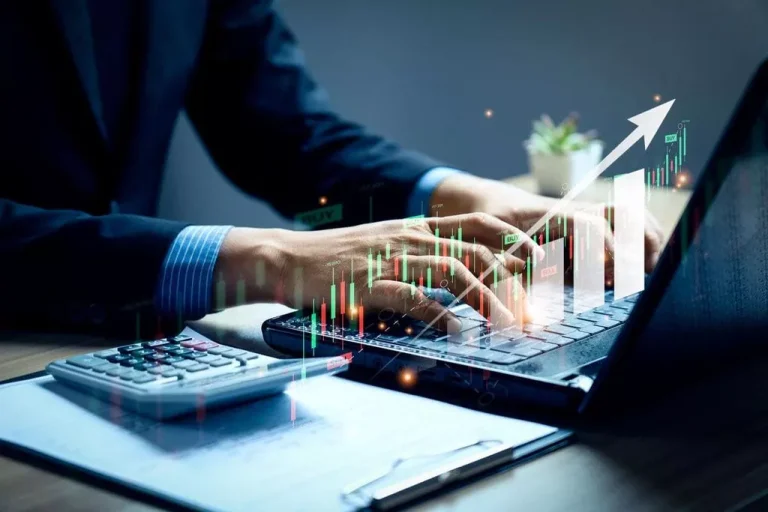Content
A diverse selection of cryptocurrencies on a derivatives exchange allows Volatility (finance) you to diversify your trading strategies effectively. When selecting a platform, it’s important to ensure that it offers a broad range of assets, including major coins like Bitcoin and Ethereum, as well as popular altcoins. By choosing a platform with comprehensive offerings, such as those found on the best Ethereum exchanges, you can maximize your trading opportunities and tailor your strategies to different market conditions.
Crypto Structured Products Landscape
To explain, using derivatives for hedging helps traders limit losses in the event of an adverse price movement. The most commonly traded types of derivatives include futures, options, and perpetual contracts. Cryptocurrency derivatives enable experienced digital asset traders to execute advancing trading strategies using leverage. They can also be used to hedge digital asset portfolios or a large long position in a particular crypto asset. A cryptocurrency derivatives contract is a tradeable financial instrument that derives value from an underlying crypto asset, enabling traders to gain exposure to the crypto derivatives exchange asset’s price movement without actually owning it. Crypto derivatives have become an increasingly large part of the global crypto asset markets, enabling traders to speculate on price movement or hedge their market exposure.
Introduction to Crypto Derivatives, Options, and Futures
The incremental return that a futures contract generates outside of that derived from a change in the underlying’s spot price is known as the carry or roll yield (as the holder rolls up or down the futures curve through time). One final major difference is the location of exchanges as an outcome of the regulatory landscape. Given wide regulatory disparities across jurisdictions, crypto exchanges selectively operate where allowed, and those with the largest suite of offerings often only operate in more lax jurisdictions. Trading on BitMEX and other cryptocurrency derivatives markets is a high-risk, high-reward endeavor. First, traders can use what’s referred to as “leverage,” meaning that they can wager a much larger bet—commit to a much larger position—than they can cover with the funds currently https://www.xcritical.com/ in their account.

Liquidity and market depth: A synergistic effect
- The parties involved are obligated to fulfill a commitment to buy or sell the underlying asset.
- While spot trading also allows speculation — buying low and selling high — leverage is what makes derivatives attractive to traders.
- Paradigm’s institutional liquidity network plays a crucial role in the ecosystem, accounting for about 30% to 35% of Deribit’s monthly trading volume.
- That said, the digital asset-based derivative market faces many challenges over the next few years.
- This can be particularly advantageous in a volatile market, where quick trades can lead to significant profits or losses.
- Always look at factors like trading fees, payment methods, security features, and accessibility.
- With over 40 exchanges trading crypto derivatives and more than 400 global cryptocurrency exchanges, it is evident that cryptocurrencies and crypto derivatives are more globally accessible.
It is important to note that there is no guaranteed way to make money trading derivatives in the crypto market, and it can be a highly risky endeavor. However, there are some ways traders minimize risks and maximize their chances of success. Derivatives also allow traders to hedge their risks and manage their portfolios more effectively, increasing market efficiency.

Can I use automated trading bots on crypto derivatives exchanges?
Futures are financial derivatives contracts where you have the obligation to buy or sell the underlying asset at a predetermined date at an agreed price in the future. Taxation of crypto derivatives trading varies by jurisdiction and can be complex. Profits from trading are typically subject to capital gains tax, while losses may be deductible. However, tax regulations are continually evolving, so it’s essential to consult with a tax professional and verify information with local authorities to ensure compliance with current laws and regulations. A variety of payment methods can make a derivatives exchange more accessible and convenient.
This minimises the need for large collateral pools and reduces the amount of collateral needed to be posted. This structure ensures that counterparty risk is effectively managed, and positions are closed in a timely manner without exposing the rest of the market to systemic failures. The OTF framework has the flexibility to work without external clearing, and supports the trading of perpetual contracts. By interposing the intermediary, it facilitates transactions with multiple exchanges without set termination dates while the broker manages the matching of buyers and sellers without taking a directional market position.
The seller could be an oil company concerned about falling oil prices that wanted to eliminate that risk by selling or shorting a futures contract that fixed the price it would get in December. There are different types of derivatives that can be used for risk management, speculation, and leveraging a position. The derivatives market continues to grow, expanding with products to fit nearly any need or level of risk tolerance. The term “derivative” refers to a type of financial contract whose value is dependent on an underlying asset, a group of assets, or a benchmark.
A derivatives crypto exchange is a platform where traders can buy and sell derivative products based on the value of cryptocurrencies. Unlike traditional spot markets, where actual cryptocurrencies are exchanged, derivatives involve contracts whose value is derived from the underlying assets, such as Bitcoin or Ethereum. These exchanges allow traders to speculate on the future price movements of cryptocurrencies without owning the actual coins. They offer various products, including futures, options, and perpetual contracts, providing opportunities to profit from both rising and falling markets. Futures, options, perpetual swaps, and token derivatives each serve distinct roles in the financial strategies of both retail and institutional investors. Key considerations include understanding the various types of crypto derivatives available and their applications in hedging against volatility, speculating on future prices, or enhancing market liquidity.
The Market button will create a counter Market Order to the fully open position. Use Option A if you prefer to partially reduce your position instead of closing it entirely. A. From the Order Box – You can close or reduce your open position by creating a Limit Order or Market Order that is opposite from your open position. For example, if you want to close or reduce an open long position, you can create a Sell Limit Order or Market Order. You should always check your existing positions before doing this to ensure that you make the correct inputs. It is important to monitor your balances and open positions closely because all balances will be updated as the Mark Price changes.
One of the most popular types of decentralized derivatives is perpetual futures (or “perps”), which allow traders to speculate on asset prices without an expiration date. These instruments have become the most widely traded decentralized derivatives. Funding rates are periodic payments made between traders in perpetual contracts to keep the contract price aligned with the underlying asset’s price.
Nothing contained herein shall constitute a solicitation, recommendation, endorsement, or offer by Crypto.com to invest, buy, or sell any coins, tokens, or other crypto assets. Returns on the buying and selling of crypto assets may be subject to tax, including capital gains tax, in your jurisdiction. Any descriptions of Crypto.com products or features are merely for illustrative purposes and do not constitute an endorsement, invitation, or solicitation. Learn about the main types, including options andfutures, and whether to trade them. For example, a Bitcoin mining company may sell Bitcoin futures contracts to hedge its natural long position in BTC against a steep drop in the price of bitcoin. David Siska is the Head of Research at Vega Protocol and a Reader in Mathematics and Mathematical Finance at The University of Edinburgh.
The platform facilitates these trades by matching buyers and sellers and ensuring the terms of the contract are met. Additionally, these platforms often offer leverage, allowing traders to control larger positions with a smaller initial investment. However, while leverage can amplify profits, it also increases risk, making it essential to understand the mechanics before trading. OTC derivatives provide increased flexibility on terms and allow users to customize components of their trade like the notional size, tenor, strike, and settlement.
They function similarly to traditional futures contracts, but with cryptocurrency as the underlying asset. This is due to principles of no-arbitrage pricing which states that derivatives are priced such that no arbitrage opportunities exist. Futures contracts are said to be trading in contango (backwardation) when the price of the future is higher (lower) than spot.
Always understand the risk that you’re accepting with trades, whether it is with derivatives or otherwise. However changes in regulations could provide clearer rules and better protection for investors. When entering into a futures contract, traders can take a long or short position, indicating the direction they believe the asset’s price will move. Crypto futures are a type of derivative contract that allows two parties to agree on the price of a cryptocurrency at a fixed date in the future. Upon expiration of the contract, the buyer is obligated to receive and purchase the asset, while the seller is obligated to deliver and sell the asset. You should not construe any such information or other material as legal, tax, investment, financial, cybersecurity, or other advice.
At expiration, if the stock price is higher than the strike price, the put option is worthless, and the option writer keeps the premium. In that case, the call will expire worthlessly, and the call seller will retain the premium. The trader with a short position in the contract, the seller, would incur a loss of $17,780. With experience comes confidence, but derivatives trading is still a risky exercise in speculation. Once you pick a crypto exchange, it is usually easy to set up a trading account.
